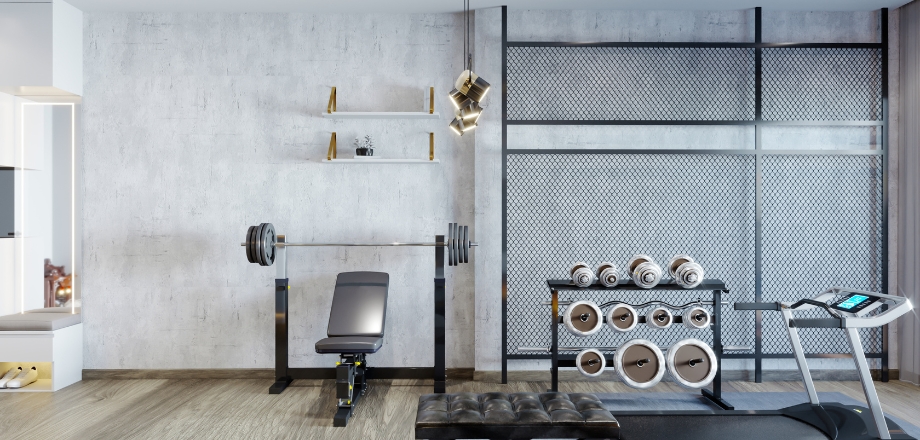In recent years, the trend of working out at home has grown significantly, with more people deciding to build their own home gyms. Setting up a home gym can be a worthwhile investment in your health and fitness journey due to the convenience and flexibility it provides. However, with so many alternatives on the market, it can be difficult to choose the perfect home gym equipment. To help you make an informed selection, here are eight things to consider when choosing home gym equipment, including a body composition scale, especially if you’re in Australia.
1. Determine Your Fitness Goals
Before purchasing home gym equipment, take the time to thoroughly evaluate and clarify your fitness objectives. Are you looking to increase muscle mass, improve cardiovascular health, decrease weight, or improve general fitness and flexibility? Understanding your goals can not only assist you in selecting the appropriate equipment, but also in developing a personalized training plan to accomplish your desired outcomes. Consider working with a fitness professional or personal trainer to help you develop realistic and attainable goals based on your current fitness level and lifestyle.
2. Assess Your Available Space
When constructing your home gym, it is vital to consider available space. Measure the allotted area and consider any potential obstacles or constraints, such as low ceilings or uneven floors. Consider the layout of your room and how you may maximise its potential by strategically arranging equipment to improve functionality and accessibility. If your room is restricted, try investing in space-saving equipment like foldable treadmills, tiny ellipticals, or adjustable dumbbells that may be conveniently packed when not in use.
3. Budget Considerations
Establishing a budget for your home gym equipment purchase is essential to avoid overspending and ensure you get the most value for your money. Research the price range of various equipment options and prioritize items based on their importance to your fitness goals. While it’s tempting to opt for cheaper alternatives, remember that investing in quality equipment upfront can save you money in the long run by minimizing the need for repairs or replacements. Consider exploring financing options or purchasing equipment in stages to spread out the cost over time.
4. Quality and Durability
When it comes to home gym equipment, quality and durability should come first. Look for established manufacturers that produce high-quality fitness equipment with strong construction and consistent performance. Pay close attention to factors like weight capacity, warranty coverage, and user evaluations to determine the overall quality and longevity of the equipment. Investing in long-lasting equipment not only assures a safe and successful workout, but also gives you peace of mind that your investment will last for years.
5. Exercise Variety and Versatility
Variety is key to maintaining motivation and achieving optimal results in your home workouts. Choose home gym equipment that offers a diverse range of exercises to target different muscle groups and accommodate various fitness routines. Consider multi-functional machines that allow for a wide range of exercises, including strength training, cardio, and flexibility exercises. Look for equipment with adjustable settings and resistance levels to accommodate users of different fitness levels and progression stages.
6. Safety Features
Safety should always be a top priority when selecting home gym equipment to minimize the risk of injuries during workouts. Look for equipment with sturdy frames, secure locking mechanisms, and padded surfaces to ensure stability and comfort during use. Consider additional safety features such as built-in emergency stop buttons, safety rails, and non-slip grips to further enhance user safety. Follow proper assembly and usage instructions provided by the manufacturer and consider consulting with a fitness professional to ensure proper form and technique when using unfamiliar equipment.
7. Consider Maintenance and Storage Needs
Maintenance and storage requirements are important considerations when choosing home gym equipment to ensure ease of use and longevity. Opt for equipment that is easy to assemble, clean, and maintain, with minimal maintenance requirements and hassle-free storage options. Consider investing in protective equipment covers or mats to prevent damage from dust, moisture, or impact during storage. Regularly inspect and clean your equipment to remove dirt, sweat, and debris, and lubricate moving parts as needed to ensure smooth and safe operation.
8. Seek Expert Advice
If you’re not sure which home gym equipment is perfect for your needs, don’t be afraid to seek expert assistance from fitness professionals, personal trainers, or seasoned gym lovers. They can provide valuable insights, recommendations, and guidance based on their knowledge and experience, helping you make an informed decision and maximize the effectiveness of your home workouts. Consider scheduling a consultation or virtual assessment to discuss your fitness goals, budget, space constraints, and personal preferences, and receive personalized recommendations tailored to your specific needs.
To summarize, selecting home gym equipment involves careful consideration of various elements, including fitness goals, space availability, budget, quality, exercise diversity, safety features, maintenance requirements, and professional counsel. By keeping these elements in mind and prioritizing quality, versatility, and safety, you can design a functional and successful home gym that supports your exercise journey and assists you in reaching your health and wellness objectives.











